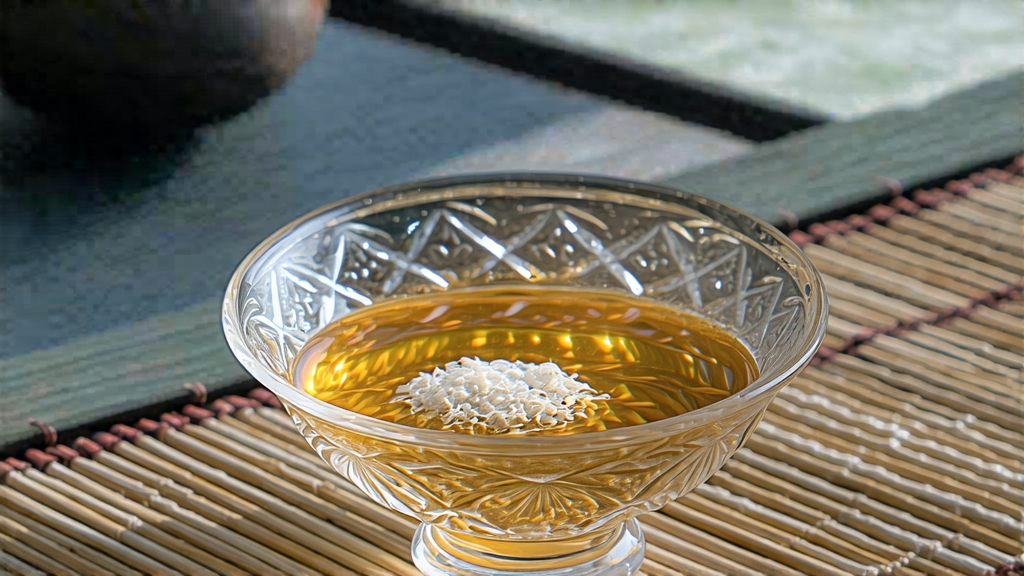
Bai Hao Yin Zhen—“Silver Needle” in the West, “White Hair Silver Tip” in its homeland—occupies the highest tier of Chinese white tea. To understand it is to listen to a story told in whispers: the hush of mist at dawn above Fuding’s river valleys, the murmur of bamboo leaves shading the bushes, the faint crackle of charcoal dying in the withering room. Nothing about this tea shouts; everything invites.
History: From Imperial Tribute to Global Muse
The first written record appears in the Song Dynasty’s “Da Guan Cha Lun” (1107 CE), where Emperor Huizong praises a tea whose buds “wear the color of jade frost.” Whether that tea was the direct ancestor of today’s Yin Zhen is debated, but by the late Ming (1600s) the counties of Fuding and Zhenghe had perfected the technique of air-drying plump buds, presenting them to the imperial court as “bai cha.” European merchants encountering the leaf in the eighteenth century nicknamed it “Silver Needle” for the downy filaments that flash like polished metal when tilted toward light. In 1891 the leaf won gold at the Melbourne International Exhibition; in 1915 it repeated the feat in San Francisco. Yet fame never rushed the tea: even during the Cultural Revolution, when tea gardens were turned to rice, old farmers hid a few mother bushes in ravines, preserving the genetics that now feed the world’s slowest-growing luxury market.
Terroir: Where Granite Meets the East China Sea
Authentic Bai Hao Yin Zhen comes only from northern Fujian—chiefly Fuding’s Taimu Mountains and Zhenghe’s high plateau. Two cultivars dominate: Fuding Da Bai (“Big White”) and Zhenghe Da Bai. The former yields fatter buds with 5.2 % amino acids, the latter slightly slimmer but richer in polyphenols. Both thrive on acidic granite soils laced with quartz; sea fog drifting inland through river gorges moderates temperature, extending the withering window and concentrating floral volatiles. Elevation ranges from 400 m to 1,000 m; above that, nights become too cold for the tender bud set required.
Plucking: One Dawn, One Standard
The rule is pitiless: only the unopened bud, plucked when it reaches 2.5–3 cm, still sheathed in two tiny cataphylls. Pickers pinch, never pull, to avoid bruising. The harvest window opens in mid-March and closes before Qingming Festival—about ten days—when rising temperatures cause the bud to unfurl overnight. A skilled picker gathers barely 500 g of fresh buds per hour; it takes 30,000 buds, a full day’s labor for three workers, to yield 500 g of finished tea.
Craft: The Art of Letting Go
White tea’s philosophy is Daoist: the leaf is allowed to become what it already is. After plucking, the buds are spread on bamboo trays 1 cm thick and left to wither for 36–48 hours. The first 12 hours are “green withering,” when enzymes begin converting lipids into floral alcohols; ambient temperature is kept below 28 °C. The trays are then stacked in a shaded corridor for “resting,” a 4-hour pause that equalizes moisture. Finally comes “sun-withering” at dawn the next day: buds are placed under 70 % shade cloth for 30–40 minutes, enough UV to trigger methylation of terpenes but not so much as to brown the tips. No rolling, no pan-firing—only a gentle 15-minute bake at 60 °C to reduce moisture to 5 %. The result is a leaf that retains its original shape, silver on the outside, jade-green at the core.
Grades & Micro-Lots
Within the narrow category of Bai Hao Yin Zhen, connoisseurs recognize three micro-grades. “Imperial Needle” consists entirely of buds harvested before the spring equinox, down so dense it feels like powdered snow. “Standard Needle” mixes equinox and pre-Qingming buds, still pure but marginally less aromatic. “Rain Needle,” picked during light spring showers, offers a softer cup prized by Japanese tea masters for its umami edge. Each grade is further sorted by length: Grade A buds measure